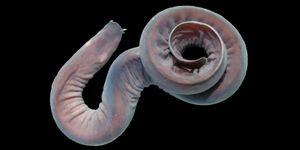Microplastics Discovered in Remote Region of the Pyrenees Mountains
It’s no secret that our planet is overrun with plastic debris. Plastic debris of all sizes reaches larger bodies of water from runoff, groundwater, and rivers. This mode of water transport has allowed microplastics—tiny plastic fragments or particles— to infiltrate the deepest parts of the ocean. However, how might microplastics have reached a remote region of the French Pyrenees mountains? A study recently published in Nature Geoscience reveals the threat that atmospheric transport of plastic particles poses worldwide.
Microplastics are defined as plastic particles smaller than 5 millimeters (0.2 in.). They have several sources including microbeads used in cosmetics and cleaning materials; pellets or “nurdles” used for manufacturing; and fragments from the degradation of larger plastics.
In 2017 scientists discovered low concentrations of atmospheric microplastics in Paris, raising concerns associated health impacts due to potential inhalation of the microscopic particles. It’s reasonable to expect this type of pollution in a heavily-populated urban area and demonstrates that atmospheric transport of microplastics is not a newly discovered phenomenon.
However, scientists were surprised to discover microplastics in this specific region of the French Pyrenees, which the study’s authors describe as “a remote, pristine mountain catchment.” In a statement to PHYS, co-author and researcher at Ecolab in France Gael Le Roux expressed “we would never have anticipated that this study would reveal such high levels of microplastic deposits.”
From 2017 to 2018, the team collected samples and identified microplastic fibers, fragments, and films. Their analysis discovered that an average of 365 microplastics settled every day per square meter of the area studied. While the team cannot pinpoint the microplastic pollution source, the nearest city is approximately 100 km (62 mi.) from the research site. This means that the particles had to have traveled through the air at least 100 km to reach the remote mountain location.
Scientists consider atmospheric microplastic pollution an “invisible threat.” Large plastic litter is unsightly and damaging to surrounding habitats, but humans must consider the threat of microscopic plastic fragments and associated health impacts. Future studies are necessary to monitor and quantify atmospheric particles in urban and remote areas.









